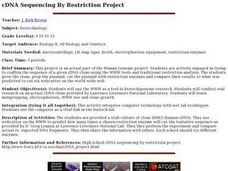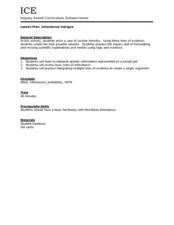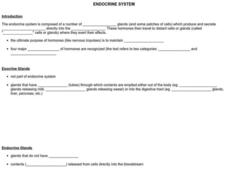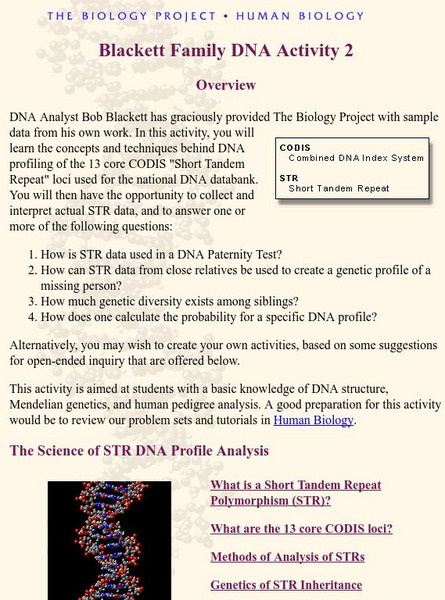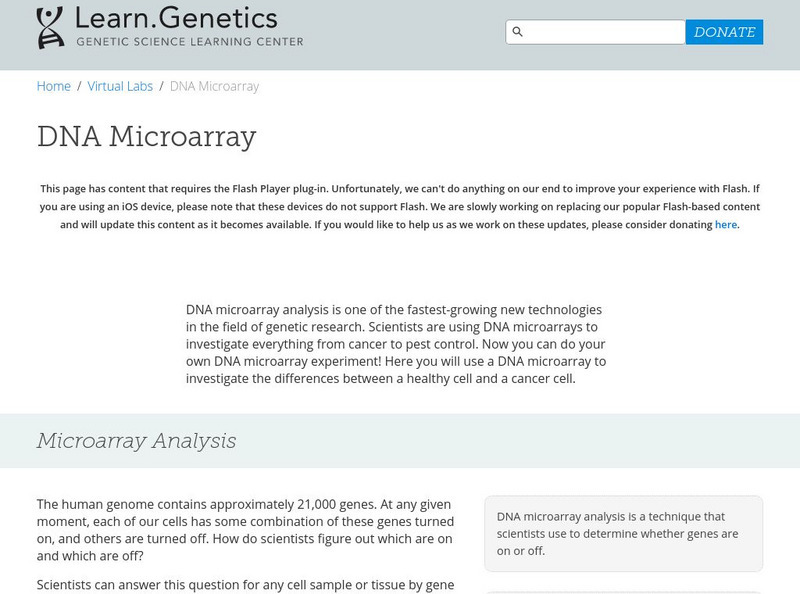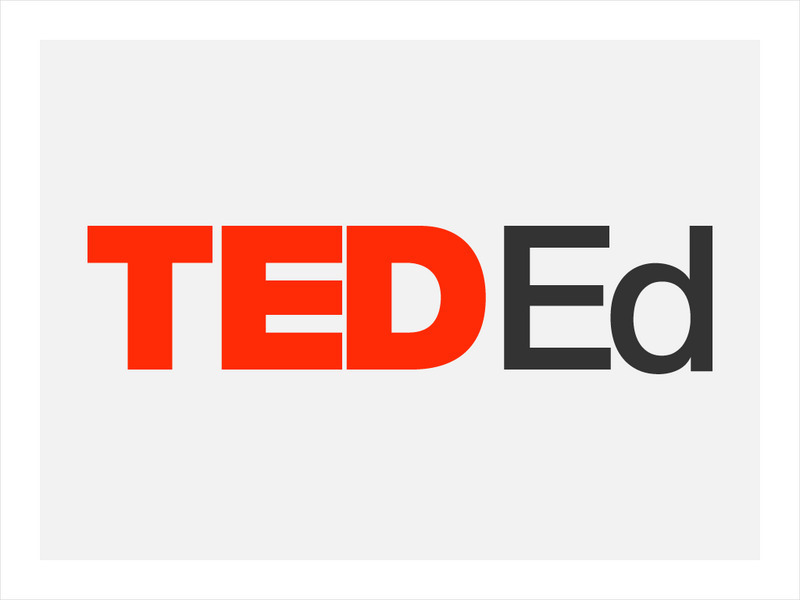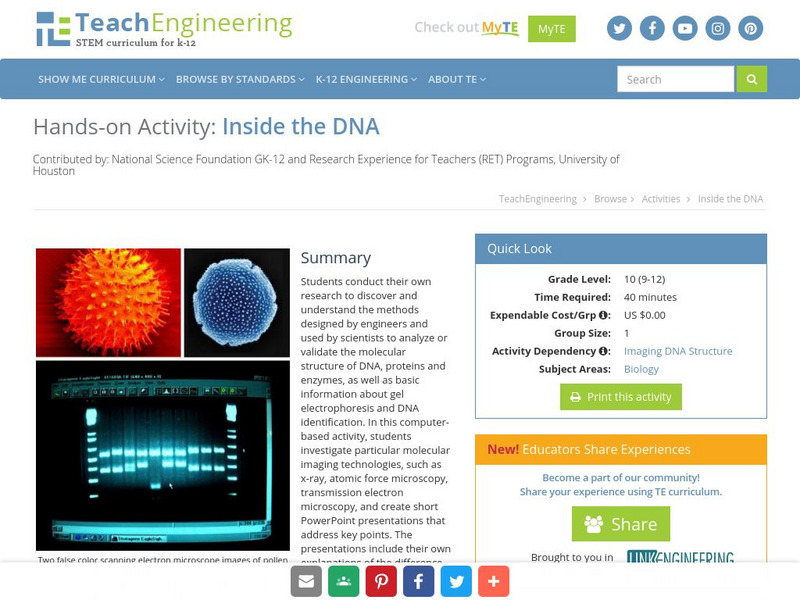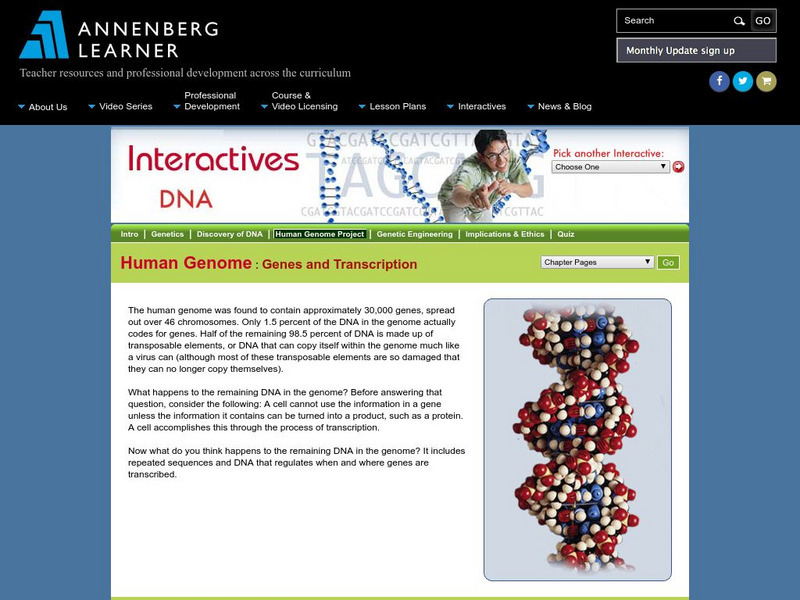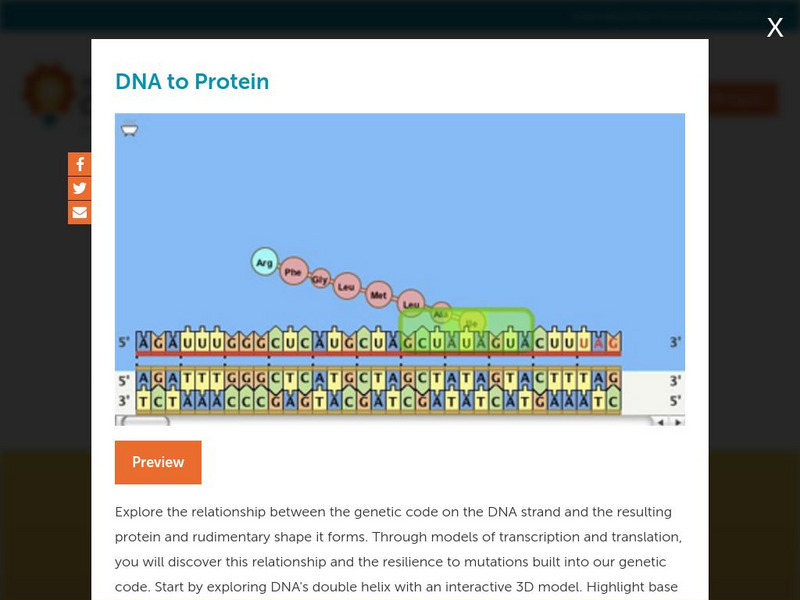Curated OER
Bioethics and the HGP
Young scholars analyze case studies using the rules and principles of ethics. They comprehend which rules and principles of theics are of great importance to the Human Genome Project. Students participate in mock student hearings.
Curated OER
Viruses and Host Evolution
Students research viruses and their effects on the evolution of a rabbit population. They complete a teacher created worksheet of questions on their research. They present their research to classmates.
Curated OER
Life's Big Questions: Where Did Life Come From?
Students explore the life forms that live in the hot springs of Yellowstone. They examine how microscopic creatures can survive in these extreme conditions. Students perform experiments to observe growth samples and demonstrate how a...
Curated OER
cDNA Sequencing By Restriction Project
Students try to confirm the sequence of a given cDNA clone using the WWW tools and traditional restriction analysis. They grow the clone, prep the plasmid, cut the plasmid with restriction enzymes and compare their results to what was...
Curated OER
Inheritance Intrigue
Students slve a case of unclear heredity using three lines of evidence and knowledge gained from the lesson in this biology lesson about Mendelian inheritance. The lesson includes handouts and a question sheet for final, individual...
Curated OER
Lights On - We Have A Quorum
Students explore basic bacteriological techniques. They investigate cell to cell communication and become aware of the environmental and evolutionary implications of this communication.
Curated OER
Technology
Pupils recognize descriptions of different types of biotechnology currently being used. They form persuasive arguments for or against that particular type of biotechnology.
Curated OER
Investigating the Uses of Backyard Bacteria
Students discover that the answers to some of society's waste and clean-up problems may be no further than the soil beneath their feet. They perform a Gram stain on the colonies to determine some of their characteristics.
Curated OER
The Chromosome Connection
Students evaluate the degree of chromosome similarity and difference between humans and apes. Students infer about the relationship between a human and ape based on similarities found.
Curated OER
Putting on Mass: Just how do Trees grow?
Students articulate an explanation of photosynthesis. They identify problems they have with comprehension of how a plant gains mass. Students describe a historical experiment.
Curated OER
Endocrine System
In this endocrine system activity, students compare and contrast the glands associated with this body system plus review the four major classes of hormones. This activity has 25 fill in the blank statements.
Curated OER
Biotechnology
High schoolers introduced to the genre of science fiction and the theme of biotechnology within that genre.
Curated OER
Cell Division: The Cell Cycle and Mitosis
Students will be able to identify the different stages of the eukaryotic cell cycle as well as the different stages of mitosis in the proper order. Students will also be able to recognize what organelles of the cell are integral to...
Curated OER
Ethical Decision Making in Biology
Students explore a model that illustrates the spread of HIV through an adolescent population. Acting in the role of epidemiologists, students explore the dilemmas of HIV infection presented by a simulation. Students produce a play, skit,...
Curated OER
Genetic Counseling
Students apply the principles of ethical decision making to actual cases. They appreciate that there is usually no one "right" decision. Students compare their conclusions to those of individuals who are in the field.
Curated OER
Virus Tracker
Sixth graders will simulate the spread of a virus such as HIV through a population by "sharing" (but not drinking) the water in a plastic cup with several classmates. Although invisible, the water in a few of the cups will already be...
University of Arizona
The Biology Project: Human Biology: Blackett Family Dna Activity 2
In this activity, students learn the concepts and techniques behind DNA profiling of the national DNA databank. Students will then have the opportunity to collect and interpret actual STR data, and to answer one or more questions.
University of Arizona
The Biology Project: Human Biology: Blackett Family Dna Activity
Family studies are a good way to learn about DNA profiling and RFLP analysis because students can follow the inheritance of DNA markers from one generation to the next. Students have the opportunity to do this in this activity.
University of Utah
University of Utah: Dna Mircoarray Virtual Lab
This interactive lab will enhance learning about DNA by virtually translating a gene.
Other
Biotechnology and Biological Sciences Research Council: Discovering Dna
This 51-page booklet is an excellent collection of activities for 11- to 14-year-olds to teach them about DNA. It was designed by Dr Sue Assinder, a molecular geneticist.
TED Talks
Ted: Ted Ed: What Happens When Your Dna Is Damaged?
The DNA in just one of your cells gets damaged tens of thousands of times per day. Because DNA provides the blueprint for the proteins your cells need to function, this damage can cause serious issues-including cancer. Fortunately, your...
TeachEngineering
Teach Engineering: Inside the Dna
Students conduct their own research to discover and understand the methods designed by engineers and used by scientists to analyze or validate the molecular structure of DNA, proteins and enzymes, as well as basic information about gel...
Annenberg Foundation
Annenberg Learner: Interactives Dna: Human Genome: Genes and Transcription
A learning module where students can learn about the structure and function of DNA. Interactive activities will explore DNA transcription.
Concord Consortium
Concord Consortium: Stem Resources: Dna to Protein
Investigate how the genetic code on a DNA strands controls what protein is produced with this collection of animations and 3D models. Explore an interactive 3D model of the double helix, watch an animation of transcription, and see the...



